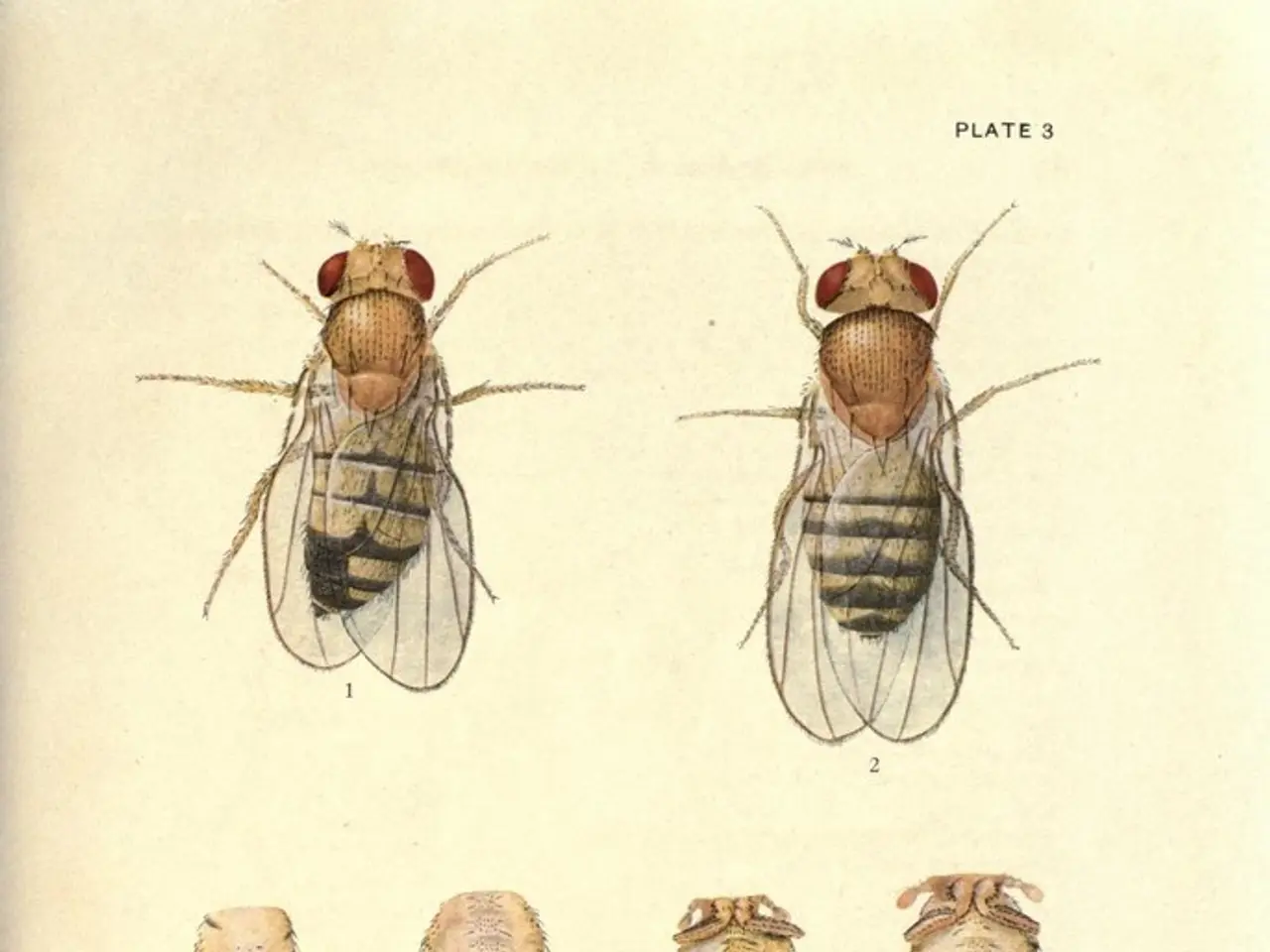The Peculiar Physique of Treehoppers: An Explanation of Their Unusual Forms
New Study Reveals Treehoppers' Unique Ability to Detect Static Electricity
A groundbreaking study led by Dr. Sam England, an ecological physicist at the University of Bristol, has shed light on the extraordinary ability of treehoppers to detect static electricity. The research, titled "Electroreception in treehoppers: How extreme morphologies can increase electrical sensitivity," was published in the Proceedings of the National Academy of Sciences.
Treehoppers, with their diverse and bizarre shapes that include horns, spines, balls, and tridents, have long puzzled scientists. Now, it appears that one of the enigmatic functions of their spectacular pronota is as an electroreceptor.
The study found that the extreme morphology of treehoppers enhances the strength of electric field stimuli around these animals, increasing their sensitivity to static electricity. This heightened sensitivity could be crucial for treehoppers in distinguishing between friends and foes, as predatory wasps emit electrical fields that are significantly different in both magnitude and polarity from those emitted by friendly stingless bees.
Dr. England and his collaborators used a picoammeter to measure treehopper static electricity. They discovered that treehoppers retreat from electrical fields, suggesting that they may use electroreception to navigate their environment and avoid danger.
The study provides a launch pad for investigating static electricity as a driver of organismal morphology more generally. Dr. England suggests that the evolution of treehoppers' elaborate pronotums may be due to random mutations or the benefits of increased electrical sensitivity.
It's worth noting that electroreception is not exclusive to treehoppers. Hoverflies and honeybees also exhibit this ability, using it for floral assessment and intraspecific communication, respectively. Even outside the insect kingdom, animals like the platypus, with its highly sensitive electroreceptors on its bill, are known for their electroreceptive abilities.
However, not all insects with electroreceptive abilities have bizarre shapes like treehoppers. Dr. England suggests that electroreception may be very widespread among insects, but not all insects may be morphologically extraordinary.
The diversity of treehoppers and their adaptations for electroreception serve as a fascinating example of how natural selection can drive the evolution of unique sensory systems. As our understanding of electroreception grows, we may uncover more about the evolutionary pressures that shape the incredible biodiversity of the natural world.
[1] England, S. J., Palmer, R. A., O'Reilly, L. J., Chenchiah, I. V., & Robert, D. (2021). Electroreception in treehoppers: How extreme morphologies can increase electrical sensitivity. Proceedings of the National Academy of Sciences.
[2] Heller, G. A., & Heide, M. (2005). Electroreception in insects. Annual Review of Entomology, 50, 371-391.
[3] Bower, J. M., & Nicholls, D. A. (2013). Electroreception in vertebrates. Annual Review of Neuroscience, 36, 1-23.
[4] Wells, D. R., & Bower, J. M. (2015). Electroreception in the platypus: A review. Journal of Experimental Biology, 218, 3005-3014.
[5] Bower, J. M., & Moss, J. (2009). Electroreception in the platypus. Science, 324, 1024-1025.
- The field of entomology, specifically the study of insects like treehoppers, may witness exciting advancements as researchers delve deeper into the role of environmental science, such as electrostatics and triboelectricity, in influencing insect lifestyles and morphology.
- As technology continues to evolve, scientists like the GrrlScientist and Dr. Sam England, pushing the boundaries in fields such as electrostatics, electroreception, and ecology, pave the way for a better understanding of the diverse and intriguing world of insects and their adaptations.




